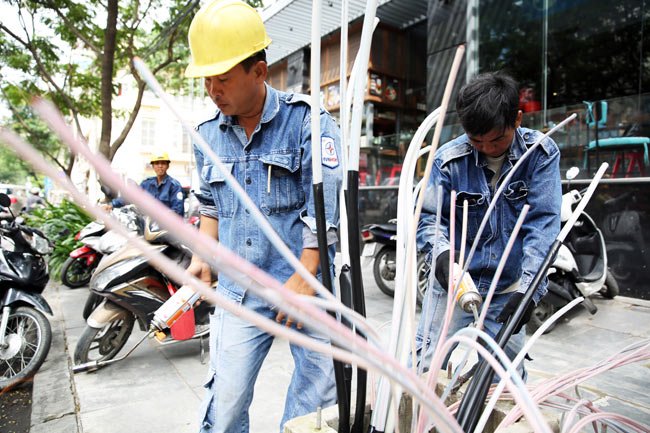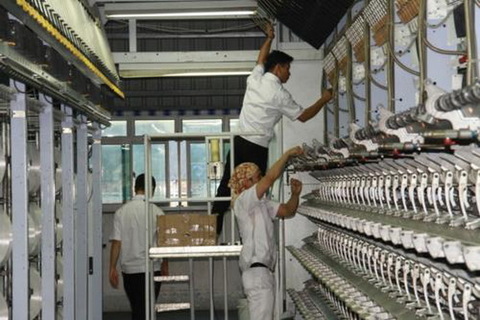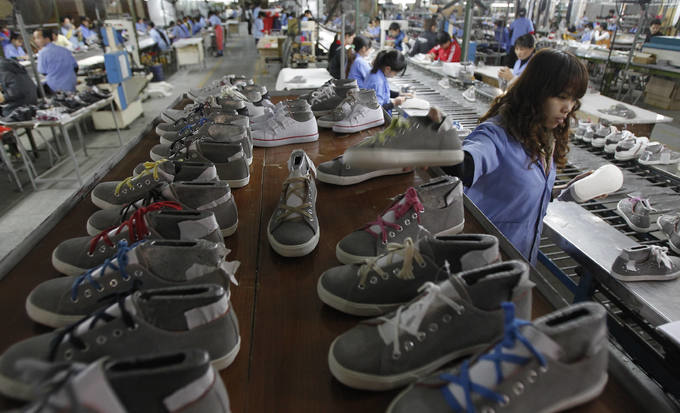Power price hike impact on inflation
Power price hike impact on inflation
Power consumption currently makes up only 3.5% of the basket for consumer price index (CPI) calculation. The average power price hike of 8.36% is therefore estimated to increase the overall CPI by just 0.3%.

The average power price has been adjusted up by 8.36% since March 20. Does such a strong price hike pose more risk for inflation this year?
Figures from the General Statistics Office show that inflation in the first two months of this year was still within projection. The CPI in January and February increased 0.1% and 0.8% respectively. The strong increase of the CPI in February is not a cause for concern, as it was affected by the seasonal factor (Tet, or the Lunar New Year). Groups of commodities for consumption during Tet posted a strong price rise in February, such as foods and catering services (up 1.73%), beverages and cigarettes (up 0.35%), and housing and building materials (up 0.69%). However, the price of the transport group declined 0.16%.
By end-February, the CPI had increased 2.64% against the year-earlier period. Viewed over the longer term of one year, the index is still on a downward trend and is much lower than the peak of 4.67% in May 2018. The CPI decline is attributed to two groups: The transport group (down 3% year-on-year) and the drug and health care service group, which inched up only 1.8% as compared with the sudden spike of 30% in 2017.
According to calculation by Bao Viet Securities Company (BVSC), with power consumption currently making up only 3.5% of the basket for CPI calculation, the average power price hike of 8.36% is estimated to raise the overall CPI by just 0.3%. This is seen as the “first round” impact, which is the most direct. In addition, since the price hike started on March 20, the 0.3% rise will impact partly the CPI in March and its remaining impact will be reflected through the CPI in April.
Furthermore, after a strong rise in February, prices of essential commodities (foods and foodstuffs) are likely to go down in March, a common phenomenon in recent years; and so the impact of the power price hike will be partly offset. This may be the reason why the Government has selected March for its power price hike decision. With this analysis, it is highly likely that the CPI in March would increase slightly, less than 0.3%.
Since 2010, the power price has been raised nine times, with the highest increase in 2011 (15.3%). Since 2013, the frequency of price adjustment has been sparser and the range of the price hike has been lower, between 5% and 9%. In the past, the “second round” (indirect) impact of the power price hike on the overall price level in the market in the following three to six months was not really clear. The CPI in some years even fell despite the power price hike, with 2015 as an example.
However, the visible point is that during the years with strong CPI rise and with power price adjustment, such as 2010 and 2011, inflation was also affected by other factors, especially strong money supply, in addition to the power price hike impact. Meanwhile, at the present time, factors concerning demand and supply in the economy, especially money supply, do not pose many risks for inflation like those of the power price hike in 2011. Therefore, there are grounds to expect that the power price hike will have an indirect impact on the price level this year but that impact will be small.
Oil price risk
Another risk for inflation that many investors are concerned with is the upward trend of the global oil prices. After an eventful 2018, with a surge in the first ten months but a plunge in the final two months, the WTI and Brent crude oil prices have recovered nearly 30% versus the level at end-2018. However, this development does not exert too much pressure on the domestic petroleum prices, as the ministries of Industry-Trade and Finance are increasing subsidy from the petroleum price regulation fund instead of raising the retail prices.
According to the forecast in the basic scenario of BVSC, if the Brent crude oil price, currently at US$67 per barrel, continues to rise steadily and reaches US$70 per barrel at the end of the year, Vietnam’s average inflation in 2019 will be 3.53%. In the scenario where the Brent crude oil price is US$65 per barrel and US$80 per barrel, the average inflation will be 3.33% and 3.76% respectively. If these forecasts come true, the Government’s average inflation target of 4% for 2019 will be achieved.
Worldwide, the trend of falling or low inflation is taking place in most countries, including both developed and emerging economies. Weak demand due to slower economic growth, especially in China, will curb the increase of commodity prices, including oil prices. The strong recovery of oil prices in the past two months is due to the oil production cut by the Organization of Petroleum Exporting Countries (OPEC), mainly Saudi Arabia. Meanwhile, on the demand side, the economy of many countries are slowing down, but not too steeply. However, this development may reverse its course in the upcoming time when the OPEC does not have much room for production cut while the U.S. shale oil supply continues to increase and the global demand falls more strongly.

















